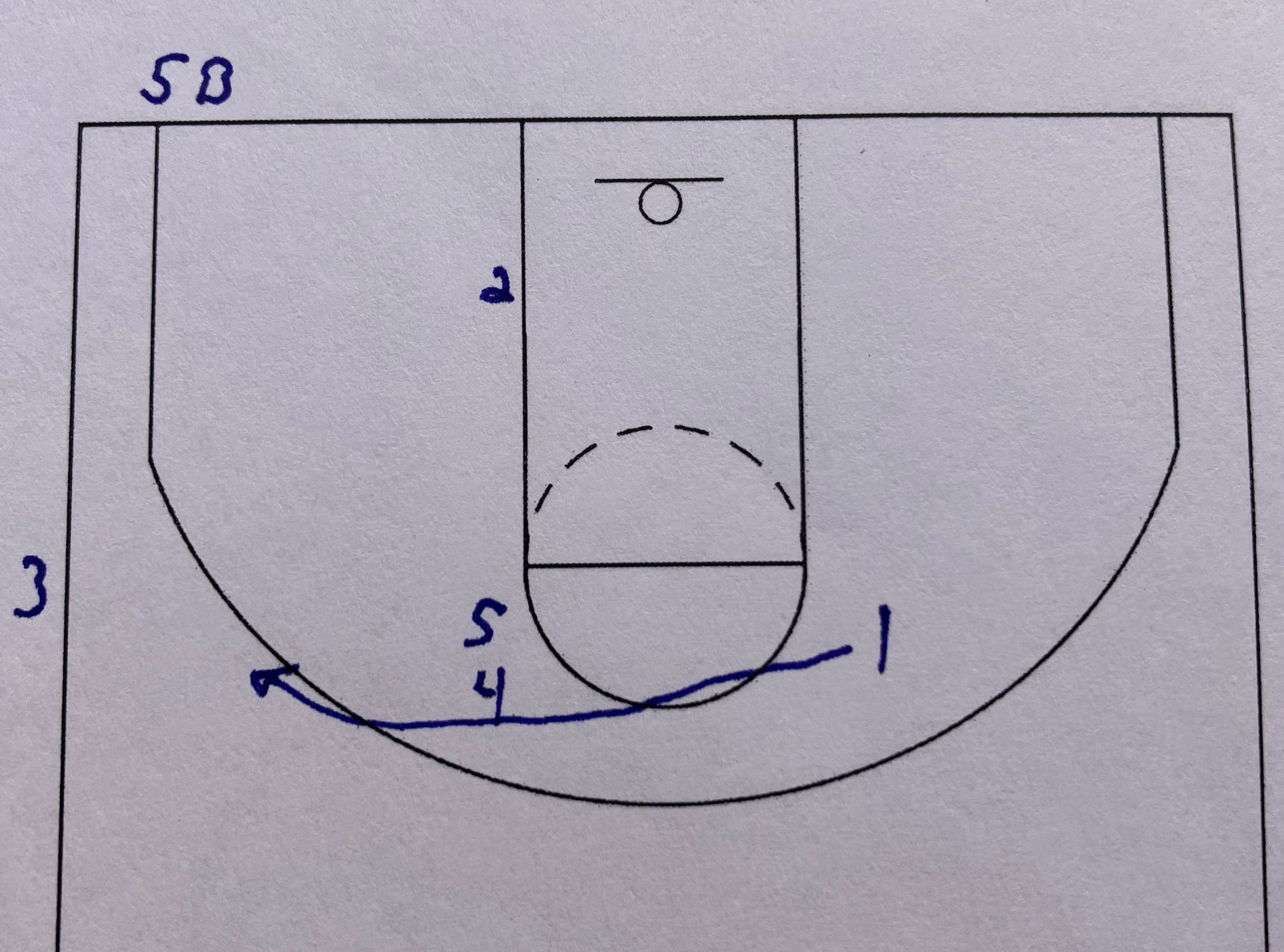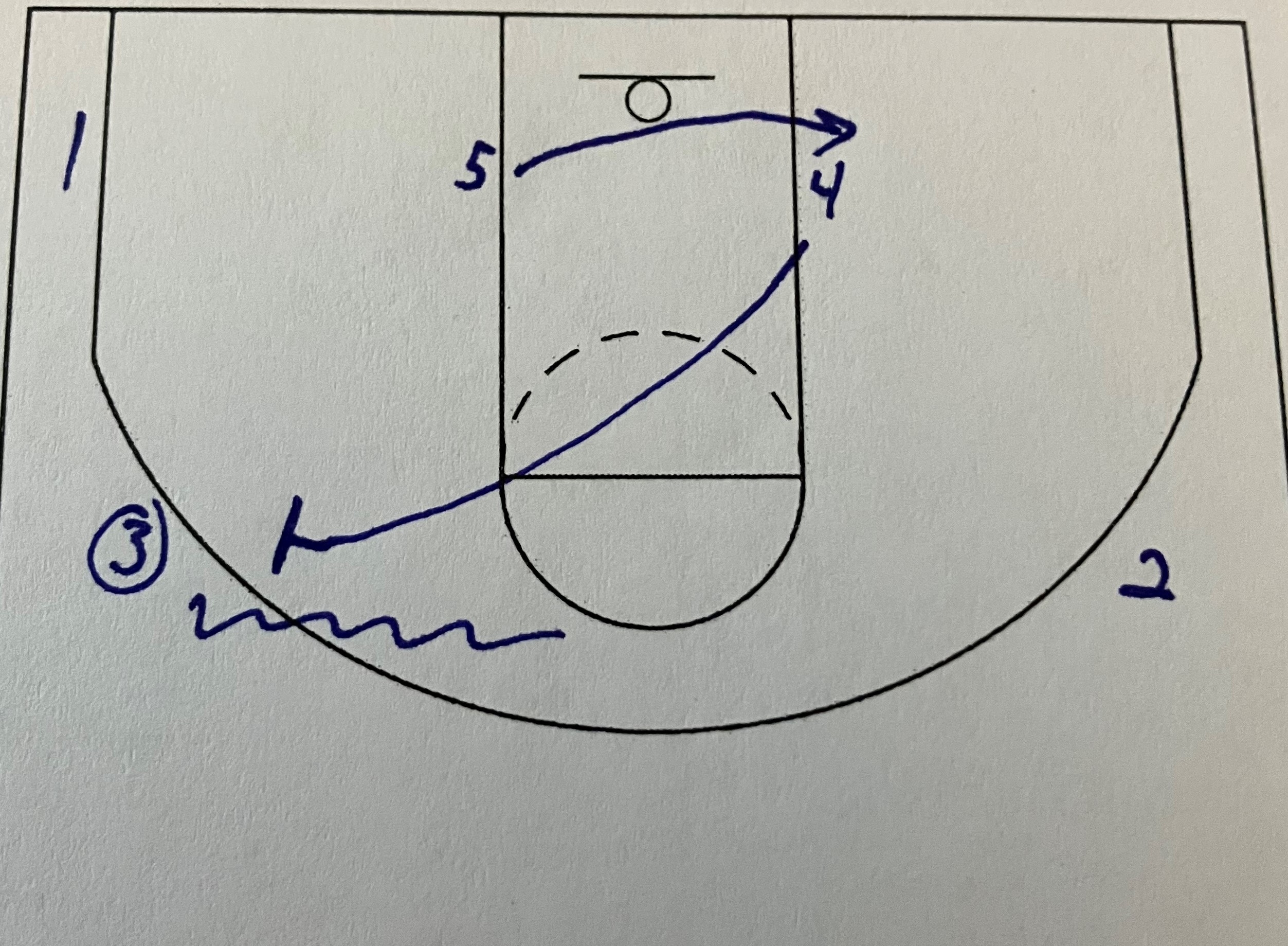Todays game of basketball has moved to an outside guard oriented game. Every team is working on getting 4 and 5 players out on the 3-point line and using dribble drives to create scoring. However, at the high school level, there will be years when a back to the basket post player is on the team. How can we as a coach maximize that player? One of the ways to utilize a post player against an opponent is to get them easy touches and scoring chances. With the game moving to an outside game, the ability to guard the post is also declining. Forcing another team to guard a post player can be difficult. By getting post touches, this problem with guarding a post player can become a big advantage. Here are five plays to get the ball into a post players hands through the offense. Note that all of these plays can be reversed and use the other side of the floor.
Iso Post Play 1


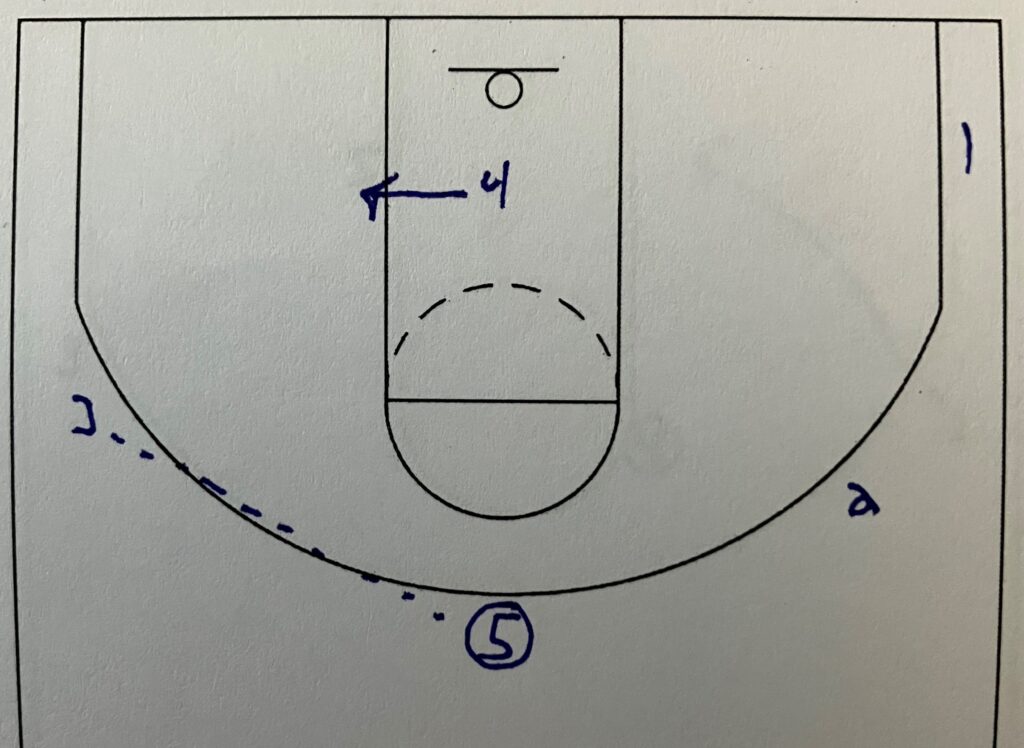
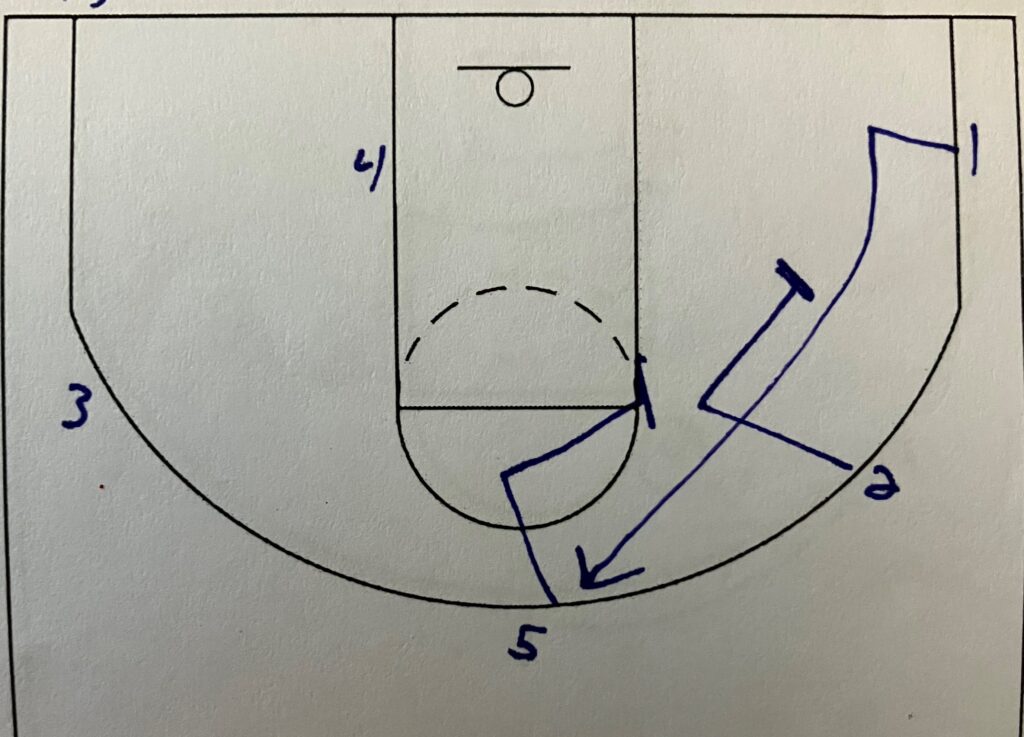
This first play creates a natural high low play with a big to big pass if done correctly. This works really well against team who three quarter or full front the post. It can start in a box set with the wings(2 and 3) popping out or it can start with the wings already out and working to get open. I like the box set so the wings can explode out creating space for the first pass. After the pass the point(1) cuts to the ballside corner.
The backside big(5) flashes to the high post. If a defense is three quarter front or full front then the post(4) should reverse pivot and seal the defender on their butt. On the catch, the 5 looks into the post. If the 4 can reverse pivot and seal then its a high low pass and the post(4) finishes on the backside of the rim. By finishing on the backside, it takes away the ability of the defender to block the shot. The high low pass should be towards the backside block helping the low post begin their movement to the backside where they should be shooting the shot.
If the high low is not there then the 5 completes the reversal with the post(4) following the ball for another chance to enter the ball into the post. If the wing(3) can enter the ball into the post then they are passing to the post(4).
The last movement is done for two reasons.
- It takes away the backside help if the 3 post feeds the 4.
- If the 3 can not post feed the 4 then the offense has another chance for a shot.
The backside wing(2) and flashing big(5) set a double stagger screen for the point(1) to come to the top of the key for an open 3. If the ball does not enter the post then this should give the point a wide open 3 so the offense is still getting an open look even though it is not the isolation post feed the play is designed to get. If the defense is helping off the outside players worried about the post then this double screen should be wide open. It helps to punish the defense if they are helping the post too much.
Iso Post Play #2
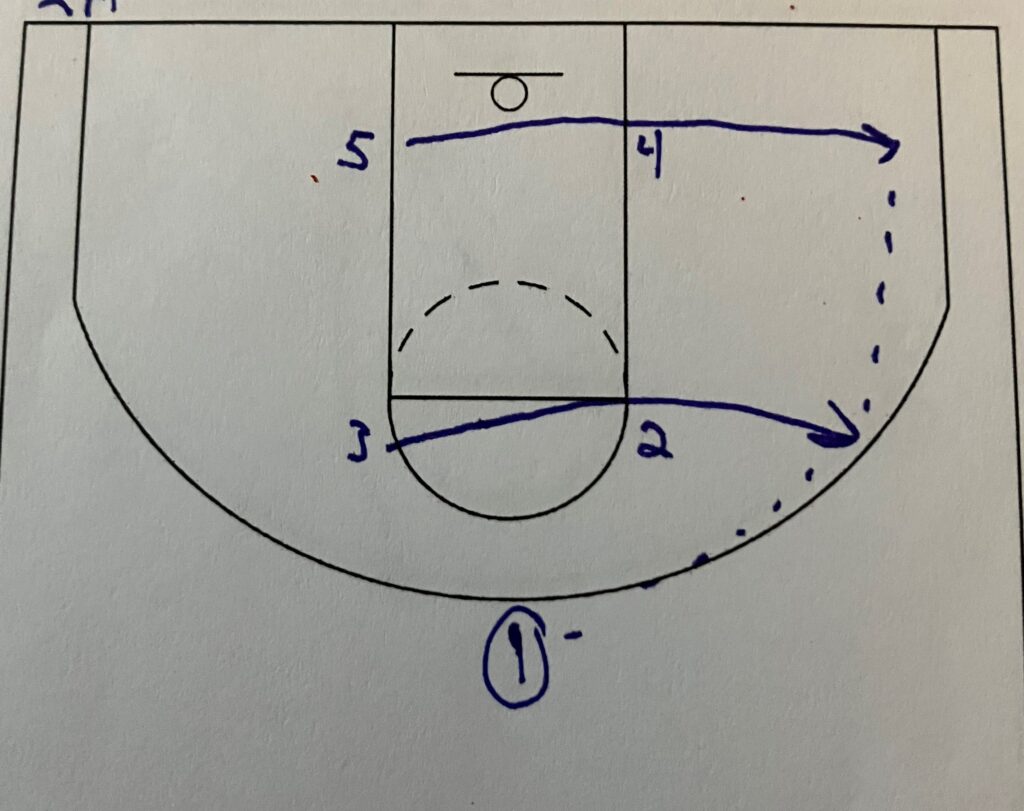

This is a quick play. It starts in a box. One side of the box runs across the floor getting screens from the other side. Basically the box shifts to one side of the floor. This puts all five offensive players on the same side. This is going to eliminate any backside defensive help. As the two run across the floor, the ball is passed to the wing and quickly down to the corner.
Most defenses are going to have the defenders on the top side of the two bottom(4 and 5) offensive players. This play is using the standard defensive setup against the defense. The ball being passed quickly keeps the post defender(4) on the top side. The post(4) works to seal the defender to the upper lane opening as much space on the baseline as possible. The corner big(5) makes a pass around their defender on the baseline side. This should make for an easy catch and finish if the post(4) has been able to seal their defender up the lane.
Iso Post Play #3
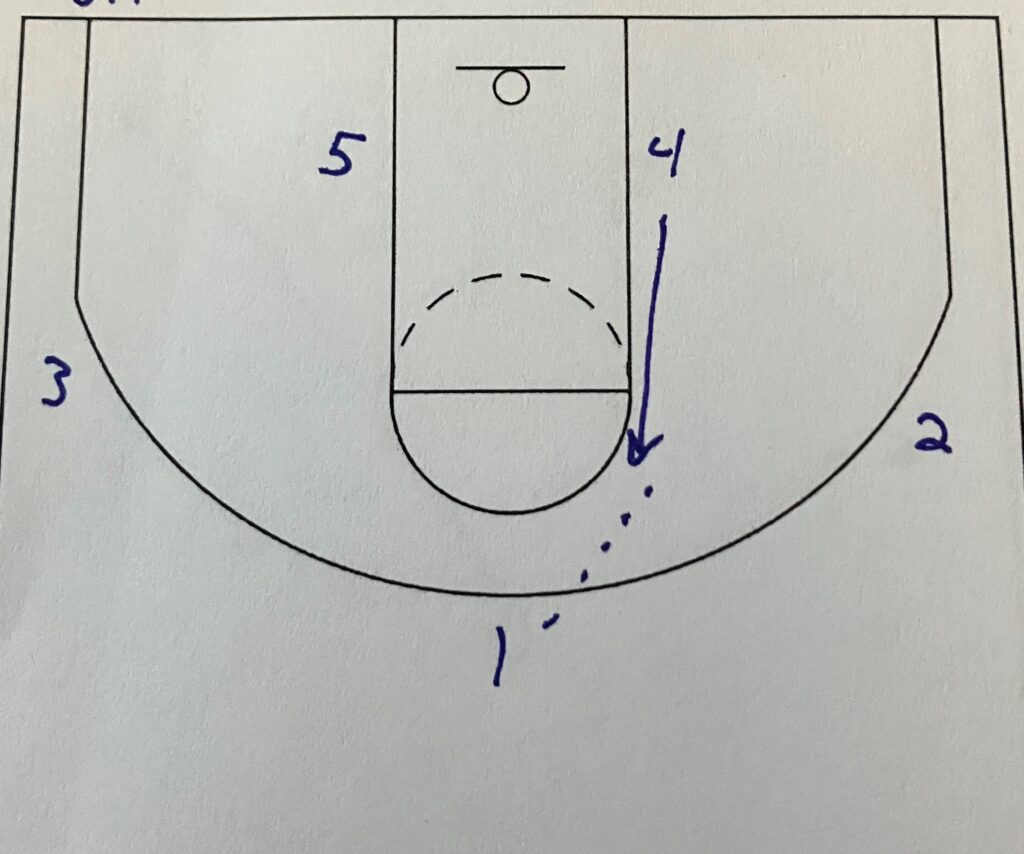
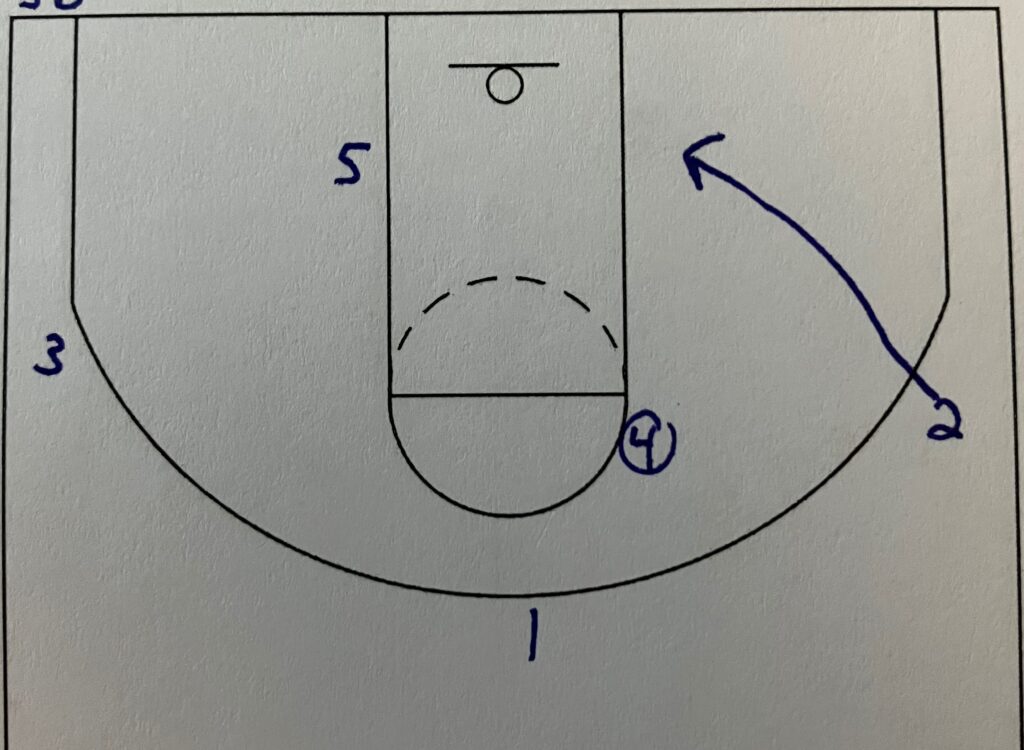
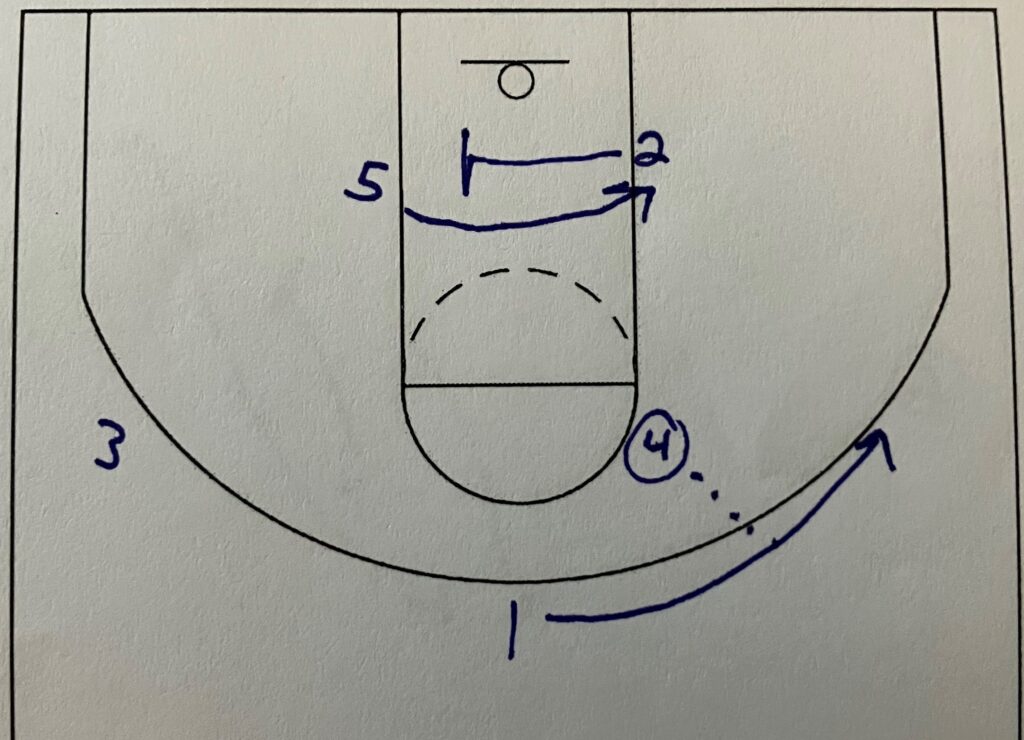

This play takes a little bit longer to actually get into the play. It starts in a 1-2-2 set. The big(4) will flash up to the high post for the initial entry pass. Off this entry pass, the first option is an immediate backdoor by the ballside wing(2). Sometimes a team can catch the wing defender sleeping and get a quick backdoor layup right at the beginning of the play.
If the backdoor does not work then it is either a handoff from the post(4) back to the point(1). Or it could be a pass and screen by the 4 and 1. This is to get the ball back to the wing. As the post(4) and point(1) are moving the ball over to the wing, the backdoor cutter(2) keeps cutting across the lane to set a screen for the post(5). The hope is the backdoor cut will occupy the 2 defender and they will not help chip or check the screen on the 5. This will leave the 5 open coming across.
As the ball is entered into the post(5) from the point(1), the wing(2) and post(4) interchange. The cutting post(4) could be open for a big to big pass. The wing(2) could be open because their defender steps to the post feed and forgets about their defensive assignment. If the 2 defender steps to help the post(5) then it is an easy kick out to the wing(2) for the 3-point shot.
The interchange hopefully occupies the two backside defenders leaving the post(5) isolated one on one with their defender and some time to make a move and score the ball. And if the defense does not leave the post isolated then it should be a kick out to the point(1) or wing(2) or a pass to the cutting post(4) for a wide open shot.
Iso Post Play #4
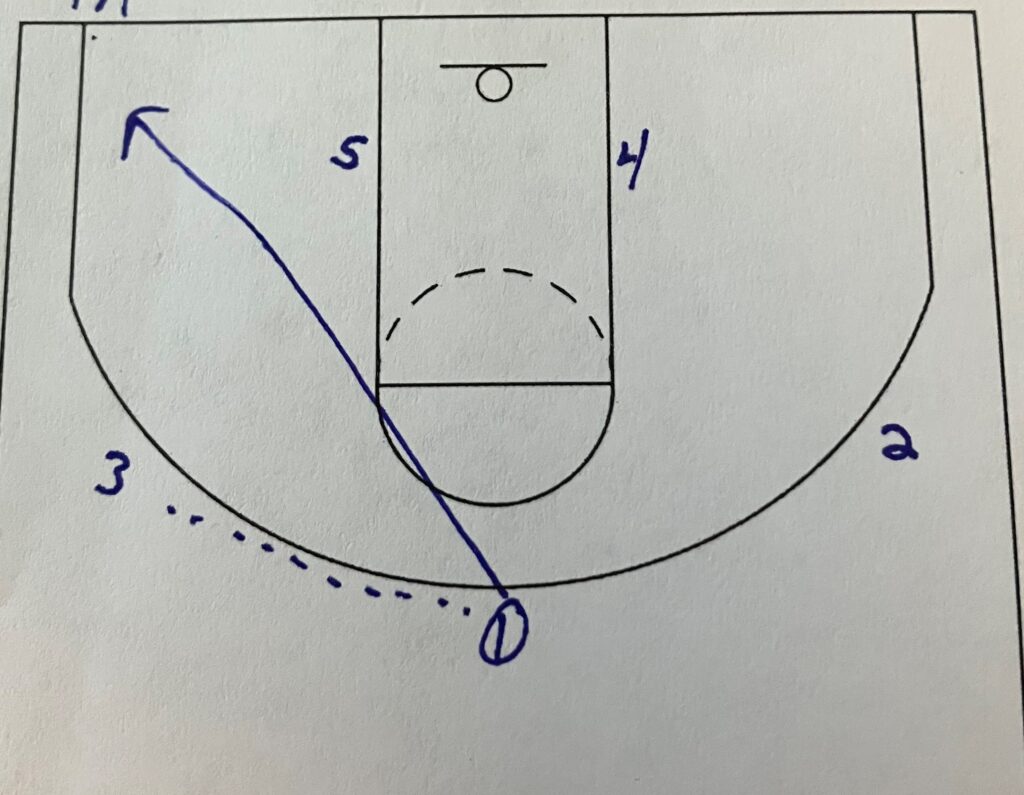
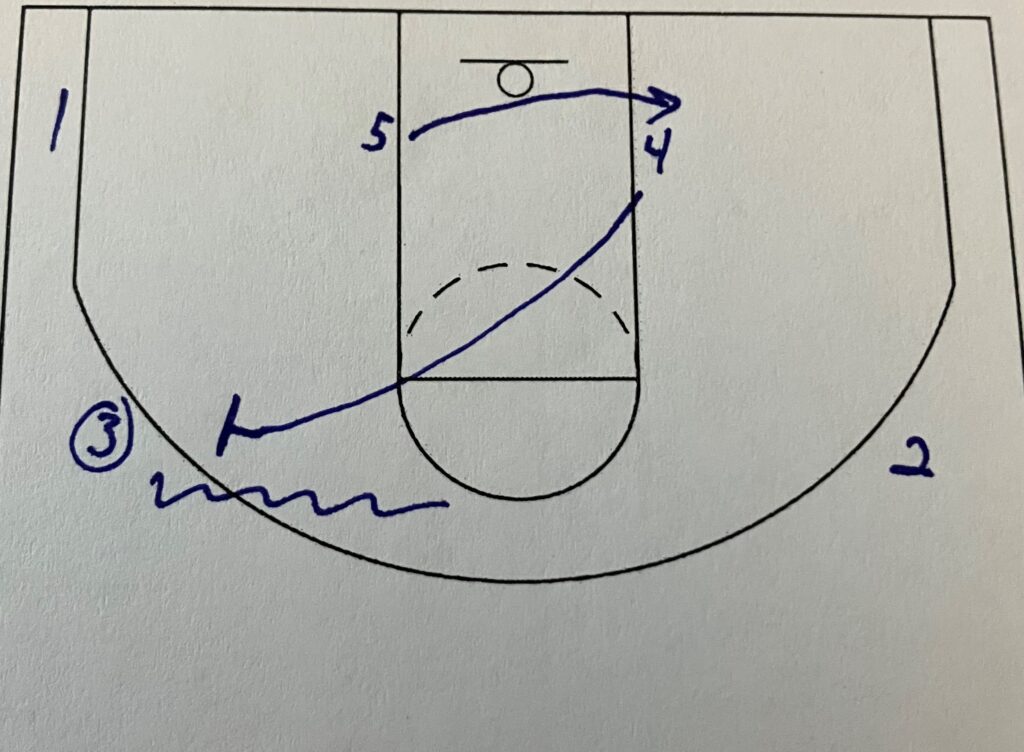
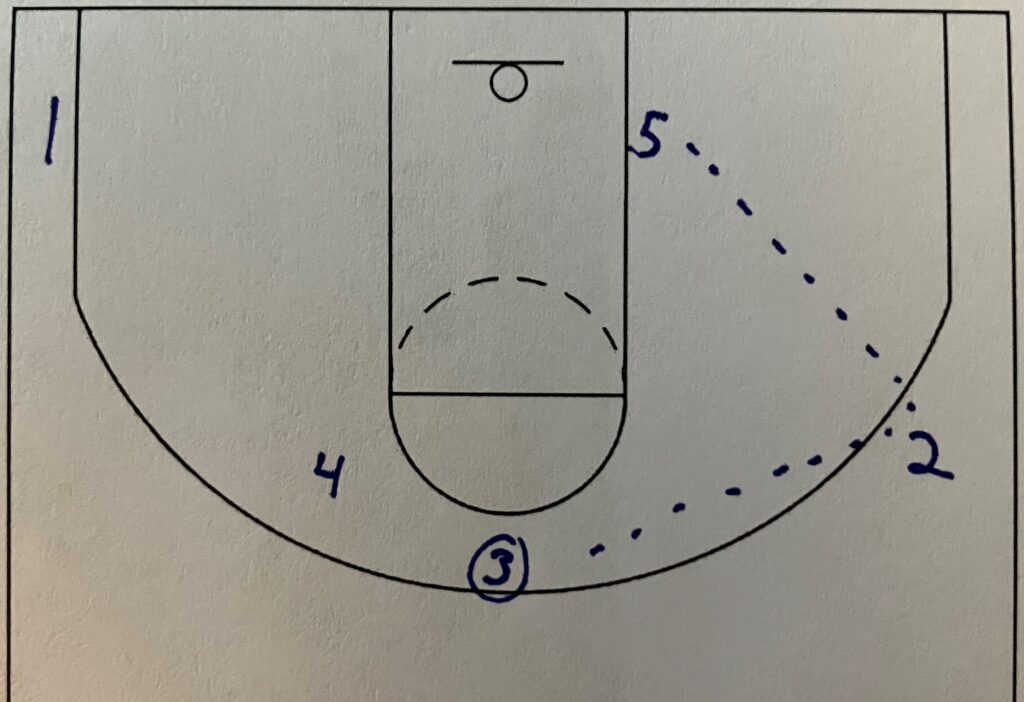
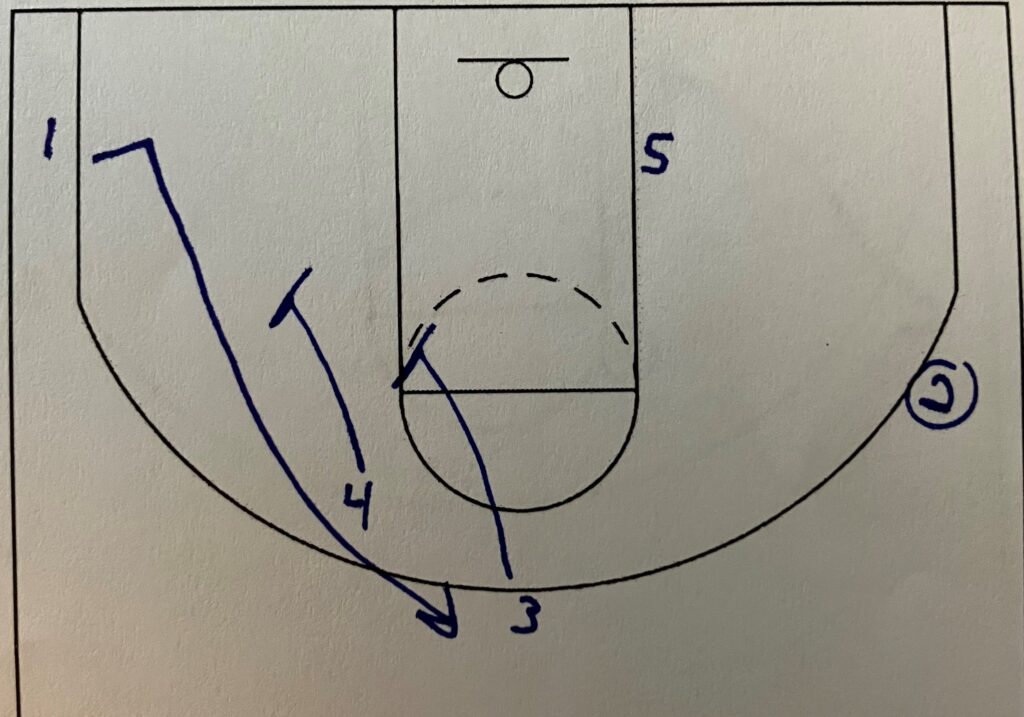
This is one of those plays where it works better against good defensive teams rather than bad defensive teams. It is designed to exploit defensive rotations on a pick and roll. If a team does not rotate on a pick and roll then it might not come open. However, against a good disciplined defense the defenders should move in a way that opens the post isolation. Keep that in mind. This description is assuming the defense is a good defensive team.
The play starts in a normal 1-2-2 setup with the initial pass going to the wing(3). The point(1) cuts to the ballside corner. Now the bigs(4 and 5) are going to move together. The backside big(4) is coming up for a ball screen. The ballside big(5) is going to move away from the ball to the backside. This is the key. Against a good defense the post defender(5) is going to take a step up or across to help with the pick and roll. This one step by the defender is going to give the post(5) the space needed to step into the defender and seal. Against a bad defensive team it is a pick and pop. A shot should come open on that movement.
The screen is a pick and pop and not a pick and roll. The screener(4) gets no closer to the basket than the elbow. This pick and pop creates the isolation for the post(5). As the wing(3) comes off the screen if nothing is there then it is passed across to the other wing(2). As this pass occurs, the post(5) should step up into their defender and seal to the baseline. The wing(2) passes around baseline side on the seal.
The pick and pop(3 and 4) set a stagger double away to point(1). This double stagger does two things.
- It occupies all of their defenders giving the post(5) a complete isolation against their defender.
- Or it gives a final scoring chance off the play if the post entry is not there.
The stagger double away gives one final chance for the play to score. It gives the offense an outside chance to score along with the inside chance of the post isolation. If the play is ran earlier in the game and gets the post isolation, then the defense may help down on the post and leave the double open later in the game for the 3-point shot. Having multiple scoring options off the same play keeps the defense honest. The defense can not over play one scoring chance because that opens up the 2nd or 3rd scoring options.
Iso Post Play #5
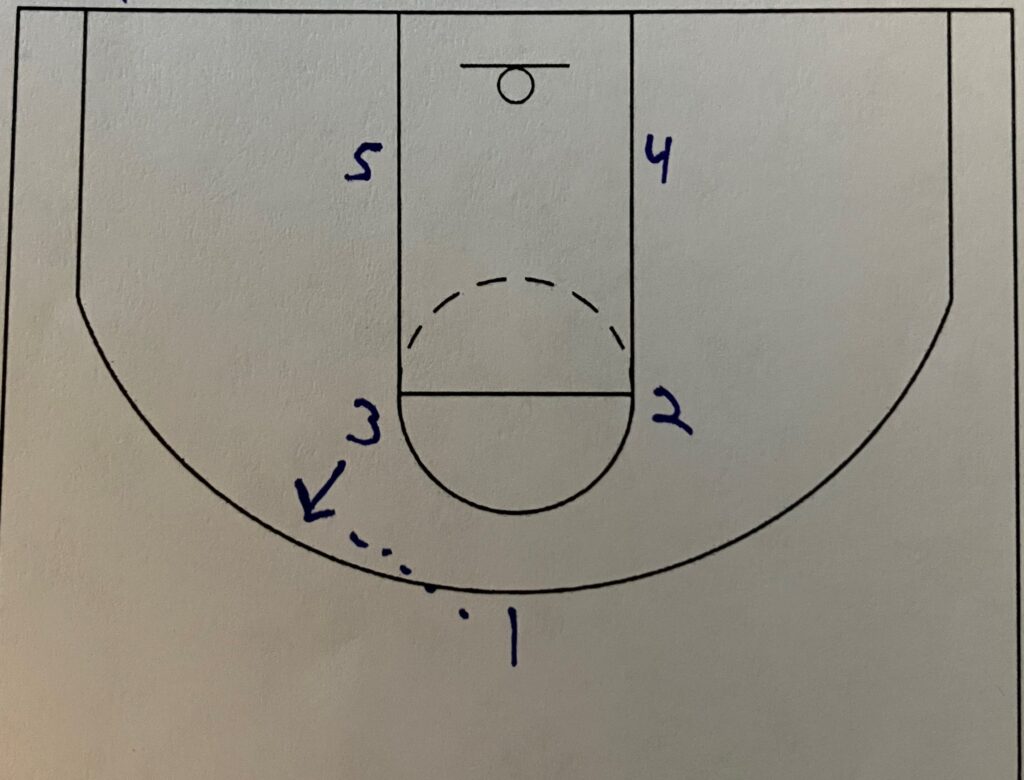
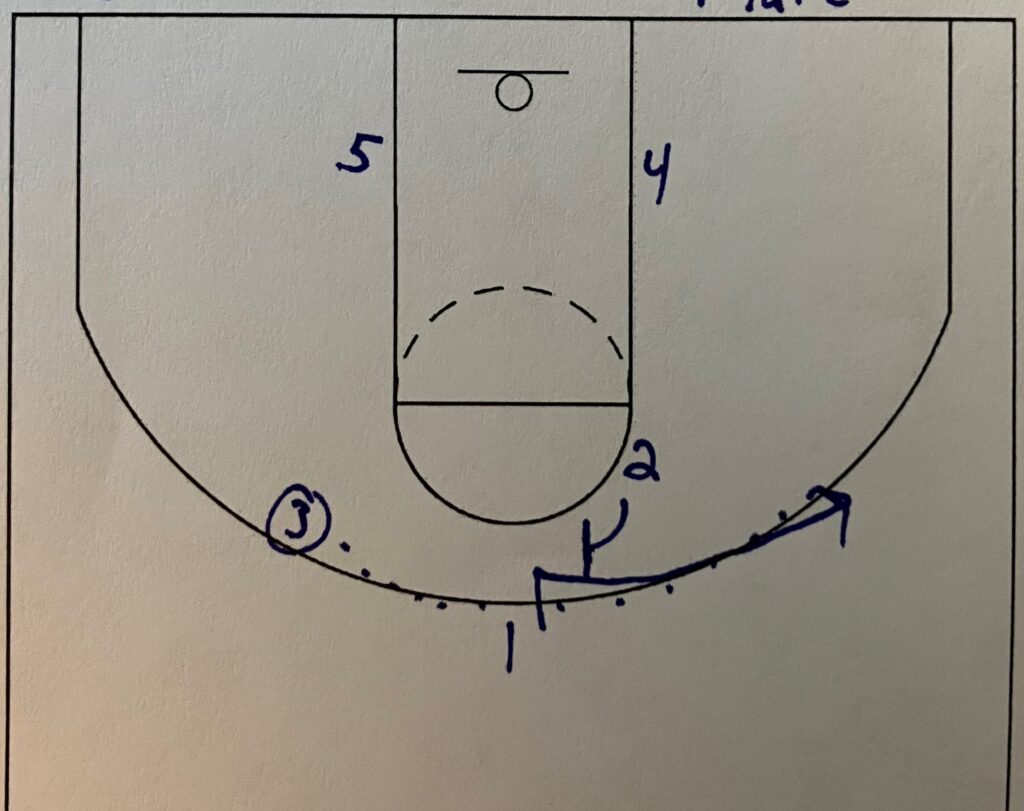
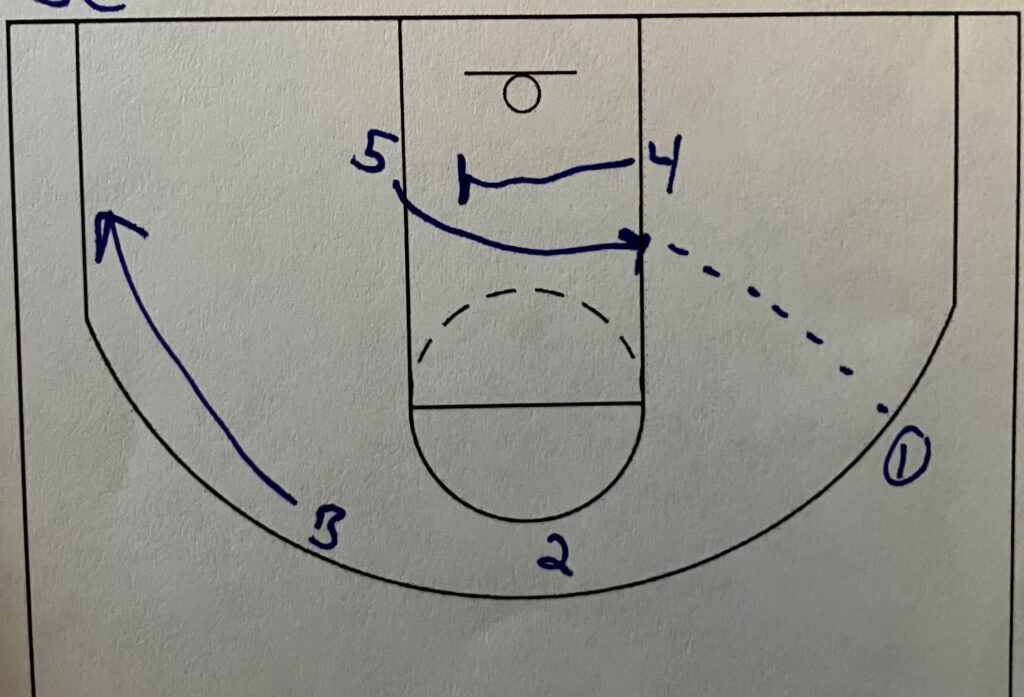
The initial setup is in a block formation. This play tries to get the defense to move towards the ball and then changes the floor to try to get the isolation for the post. The ball is entered to the wing(3) when they step out from the elbow. This puts the ball on the left side of the floor. The other wing(2) sets a flare screen for the point(1). The ball is then passed from the wing(3) to the point(1) off the flare screen. This flare is what changes the point of attack for the offense. The changing point of attack helps to set up the post screen.
Off the flare screen the ballside big(4) sets a post to post screen for the backside big(5). The post entry now comes from the point(1) to the post(5). The point(1) and wing(2) are setup for the kick out. The other wing(3) relocates to the backside wing or corner for the possible backside kick out. Depending on where the post(5) catches the ball will help determine whether the wing(3) should stop at the wing or go all the way down to the corner for a potential baseline kick out.
This is a simple play that works really well against an overplaying defense. The flare pass changing the side of the floor the ball is on helps to set up the post screen for a quick post entry. Once the post(5) gets the ball then it should be a quick move to score or a kick out to one of the guards on the 3-point line.


